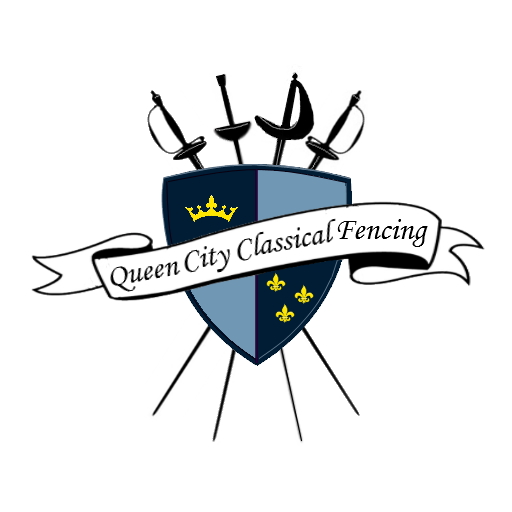Angelo, Domenico & Angelo, Henry. (1787). The school of fencing: With a general explanation of the principal attitudes and positions peculiar to the art. London.
(Digitally sourced here from Schola Gladiatori’s Schola Forum)
Batier, S. (1770). La Théorie pratique de l’escrime, pour la pointe seule, avec des remarques instructives pour l’Assaut, et les moyens d’y parvenir par gradation. Dedié á S. A. S. le duc de Bourbon. Paris. [French]
(Digitally sourced from Gallica here)
Blackwell, H. (1702). The English fencing-master: Or, the compleat tuterour of the small sword. Wherein the truest method, after a mathematical rule, is plainly laid down. Shewing also how necessary it is for all gentlemen to learn this noble art. In a dialogue between master and scholar. Adorn’d with several curious postures. London: Printed by J. Downing in Bartholomew-Close, for the author. [English]
(Digitally source from Google Books here)
Capo Ferro, R. (1610). Gran simulacro dell’arte edell’uso della scherma di Ridolfo Capo Ferro da Cagli. Siena: Marchetti & Turi. [Italian]
(Digitally sourced from maestridischerma.it here)
Castle, E. (1885). Schools and masters of fence. London, UK: George Bell and Sons.
(Digitially sourced from Google Books)
Danet, G. (1766). L’Art des armes, ou La Manière la plus certaine de se servir utilement de l’épée, soit pour attaquer, soit pour se défendre, etc. Pl. 45. Paris. [French]
(Digitally source from Google Books here); See also separate file of Danet’s Plates (source unknown).
Danet, G. (2021). The Art of Arms, The most certain method of usefully using the sword, either for attack or for defence, etc. Vol. I. (P. Crawley, Translator). Edinburgh, UK: Smallsword Symposium. [English]
(Digitally sourced from the Black Boar Swordsmanship School and mirrored here with Crawley’s permission)
de Brea, D. M. A. (1805). Principios Universales Y Reglas De La Verdadera Destreza Del Espadin, Segun La Doctrina De Francesa Italiana Y Española, Dispuestos Para Instrucción De Los Caballeros Seminaristas Del Real Seminario De Nobles De Esta Corte, por su Maestro D. Manuel Antonio de Brea, Maestro Mayory Examinador de Todos los del Reyno. Madrid: La Imprenta Real. [Spanish]
(Digitally sourced from Biblioteca Digital Hispánica, Biblioteca Nacional de España here).
de Brea, D. M. A. (2021). Principios Universales Y Reglas De La Verdadera Destreza Del Espadin, Segun La Doctrina De Francesa Italiana Y Española, Dispuestos Para Instrucción De Los Caballeros Seminaristas Del Real Seminario De Nobles De Esta Corte, por su Maestro D. Manuel Antonio de Brea, Maestro Mayory Examinador de Todos los del Reyno. [The Epic Study & Interpretation of the1805 Manuel de Brea’s Destreza-FencingTreatise]. (A. Hajjar Sesé, translator). Québec, Canada: destrezanova.ca. [English]
(Digitally sourced from destrezanova.ca here).
Demeuse, N. (1880). Le maitre d’escrime, ou, L’art dea armes. Paris: Delarue. [French]
(Digitally sourced from Gallica here)
Diderot, D., & d’Alembert, J. L. R. (1780). L’Encyclopédie. [26], Fabrique des armes, escrime : [recueil de planches sur les sciences, les arts libéraux et les arts méchaniques, avec leur explication]. [Facsimile]. Paris: Inter-Livres. [French]
(Digitally sourced from Gallica here)
Ficher, B. (1796). L’art de l’escrime dans toute son etendue: Nouveau traité avec toutes les connaissances qu’il faut pour bien manier l’épée = Iskustvo fechtovatʹ vo vsem” ego prostranstvě. St. Petersburg: Tip. Suchoputn. kad. korpusa. [Bilingual: French & Russian].
(Digitally sourced from FFAMHE here)
Girard, P.J.F. (1740). Traité des armes deie au roy, par le sr. p. j. f. girard, ancien officier de marine: enseignant la maniere de combattre de l’epée... A La Haye: Chez Pierre de Hondt. [French]
(Digitally sourced from Gallica here)
(Purchase an annotated and expanded English translation by Phil Crawley with essays by Kévin Côté here.)
Hope, W. (1707). A new, short, and easy method of fencing: Or, the art of the broad and small-sword rectified and compendized. … By Sir William Hope, Baronet. [English]
(Digitally sourced from Google Books here, see also the Linacre School of Defense.)
Hutton, A. (1889). Cold Steel (P. Valentine, transscriber). London, UK: William Clowes and Sons, Limited.
Jamain, Jean de Beaupré. (1721). Methode tres facile pour former la noblesse dans l’art de l’epée = Die allerleichtiste neue weiß, den Adel in der Fecht-Kunst zu underweisen. Ingolstatt: Graß. [Bilingual French and German]
(Digitially sourced from Fechtgeschichte here. A modern French translation can be found at EnsilUdium here)
La Boëssière, A.T. (2018). Treatise on the Art of Arms for the use of professors and amateurs. (P. Crawley, Translator). Edinburgh, UK: Smallsword Symposium. [English]
(Digitally sourced from the Black Boar Swordsmanship School here)
La Boëssière, A.T. (1818). Traité de l’art des armes, à l’usage des professeurs et des amateurs. Pp. xxii. 309. pl. 20. Paris: Didot l’aîné. [French]
(Digitally sourced from Google Books here)
La Boëssière, N. B. (1766). Observations sur le Traité de l’art des armes [de Guillaume Danet] pour servir de défense à la vérité des principes enseignés par les maitres d’armes de Paris. Par M.*** maître d’arme des Académies du roi, au nom de sa compagnie. S. l.Paris?: s. n. [French]
(Digitally sourced from Gallica here)
La Touche. P. (1670). Les Vrays principes de l’espée seule… par le Sr de La Touche. Paris: impr. de F. Muguet. [French]
(Digitally sourced from Gallica here)
Labat, Jean (1696). (maître d’armes à Toulouse). – L’Art en fait d’Armes ou de l’épée seule, avec les attitudes... Toulouse, chez J. Boudé, 1696. [French transcription]
(Digitally sourced from Ost du Griffon Noir here)
Labat. (1734). The art of fencing: Or, the use of the small sword. Translated from the French of the late celebrated Monsieur L’Abbat ; Master of that Art at the Academy of Toulouse. By Andrew Mahon, Professor of the Small Sword. Dublin: Printed by James Hort, at the Sign of Mercury in Skinner-Row. [English]
(Courtesy Project Gutenberg; see also Questions sur l’art en fait d’armes, 1701.[French])
LaRocca, D. J. (1999). The academy of the sword: illustrated fencing books 1500-1800. New York, NY: The Metropolitan Museum of Art.
(Digitally sourced from Google Books)
Le Perche du Coudray [attributed] (1676). The Exercise of Arms or Management of the Foil. (P. Crawley, Translator). Edinburgh, UK: Smallsword Symposium.
Liancour, A. W., Perelle, A., & Langlois, J. (1686). Le maistre d’armes, ou l’Exercice de l’épée seule, dans sa perfection: Dédié à Mgr le duc de Bourgogne. Par le sieur de Liancour. A Paris, chez l’auteur, Fauxbourg S. Germain, rue des Boucheries. [French]
(Digitally sourced from Gallica here)
Liancour, A.W. (1692). Le maitre d’armes, ou l’exercice de l’épée seule, dans sa perfection: Dédié à Monseigneur le duc de Bourgogne. Par le sieur de Liancour. A Amsterdam: Chex Daniel de la Feuill. [French]
McArthur, J. (1780). The Army and Navy Gentleman’s Companion or A New and Complete Treatise on the Theory and Practice of Fencing. Displaying the Intricacies of Small-sword Play and Illustrated by Mathematical Figures and Adorned with Elegant Engravings after Paintings from Life, Executed In the Most Masterly Manner Representing Every Material Attitude of the Art A New Addition Revised with a Glossary and Improvements. (P. Jamson, Transcriptionist, P. Crawley, Layout). [English Transcription]
(Digitally sourced from the Smallsword Symposium via Phillip Crawley)
McArthur, J. (1780). The Army and Navy Gentleman’s Companion or A New and Complete Treatise on the Theory and Practice of Fencing. Displaying the Intricacies of Small-sword Play and Illustrated by Mathematical Figures and Adorned with Elegant Engravings after Paintings from Life, Executed In the Most Masterly Manner Representing Every Material Attitude of the Art A New Addition Revised with a Glossary and Improvements. London, UK: J. Lavers. [English Scan]
(Digitally Sourced from Boston Athenaeum Digital Collections here)
Meikle, R. (1859). Fencer’s Manual: A practical treatise on small-sword exercises, also single-stick play, defence of sabre against bayonet, cavlry, & c. club exercises, preparatory extension motions, hints to professors and amateures; &c, &c.: with illinstrations. Melbourne: Clarson, Shallard, & Company. [English]
(Digitally sourced from the Smallsword Symposium via Phillip Crawley)
Ô Sullivan, D. (1765). L’Escrime pratique ou principes de la science des armes. Par daniel ô sullivan, Maître en faits d’Armes des Académies du Roi. Paris: Chez Sebastien Jorry. [French]
(Digitially sourced and linked to EnsilUdium)
(Get a free English translation from Phil Crawley here.)
Olivier, J. (1771). Fencing familiarized: Or, A new treatise on the art of sword play. London: J. Bell. [Bilingual: English & French]
(Digitally sourced from Google Books here)
Possellier, A. J. J. [Gomard] (1845). La théorie de l’escrime: Enseignée par une méthode simple basée sur l’observation de la nature. Paris: Dumaine. [French]
(Digitally sourced from Google Books here)
Renaud, J. (1913). Fencing: The EpeeFencing: The Epee (P. Crawley, translator). Edinburgh, UK: Lulu.
(Digitally sourced from Lulu here and shared with permission)
Silver, G. (1599). The Paradoxes of defence wherein is proved the true grounds of fight to be in the short ancient weapons & c. London: printed for Edward Blount.
(Digitally sourced from The Massachusetts Center for Renaissance Studies here.)
Silver, G. (1898). The Works of George Silver. Paradoxes of Defence and Brief Instructions Upon My Paradoxes of Defence. C. G. R. Matthey, (Ed.). London: George Bell and Sons.
(Digitally sourced from Linacre School of Defense here.)
Wylde, Z. (1711). English Master of Defence or, The Gentleman’s Al-a-mode Accomplish, Containing The true Art of Single-Rapier or Small-Sword withal the curious parres, and many more than vulgar Terms of Art plainly expressed; with the Nature of every particular pass, and the true performance thereof; withal the exquisite Ways of Disarming as Enclosing. And All the guards at Broad – Sword and Quarter Staff… Also The exact Rules of Wrestling. York: John White. [English]
(Digitally sourced from the Company of Medieval Martial Artists here)



Pingback: Monsieur de La Touche | The Smallsword Project
Thank you so much for this resource!
LikeLike
Glad you find it helpful.
LikeLike
That’s really helpful. Thanks so much. And you actually have the 1784 McArthur. Brilliant.
LikeLiked by 1 person
This site is an Amazing resource thank you so much I can’t believe I have access to texts from the 1700s.
LikeLiked by 1 person
Pingback: The Epic Study & Interpretation of the 1805 Manuel de Brea’s Destreza-Fencing Treatise | The Smallsword Project
Pingback: What’s in a Preface? – Sala delle Tre Spade
Pingback: Danet on the Demi-Volte | The Smallsword Project
Pingback: Danet on the Demi-Volte | Queen City Classical Fencing
Pingback: Trust but Verify—the Perils of Translation – Sala delle Tre Spade
Any idea where to find 18th century Italian manuals?
LikeLike
I am sorry, but I have posted all the manuals of which I am aware. If you find any, please pass along links so I may post them.
LikeLike
Any idea where to find 18th century Italian manuals?
LikeLike
I am sorry, but I have posted all the manuals of which I am aware. If you find any, please pass along links so I may post them.
LikeLike